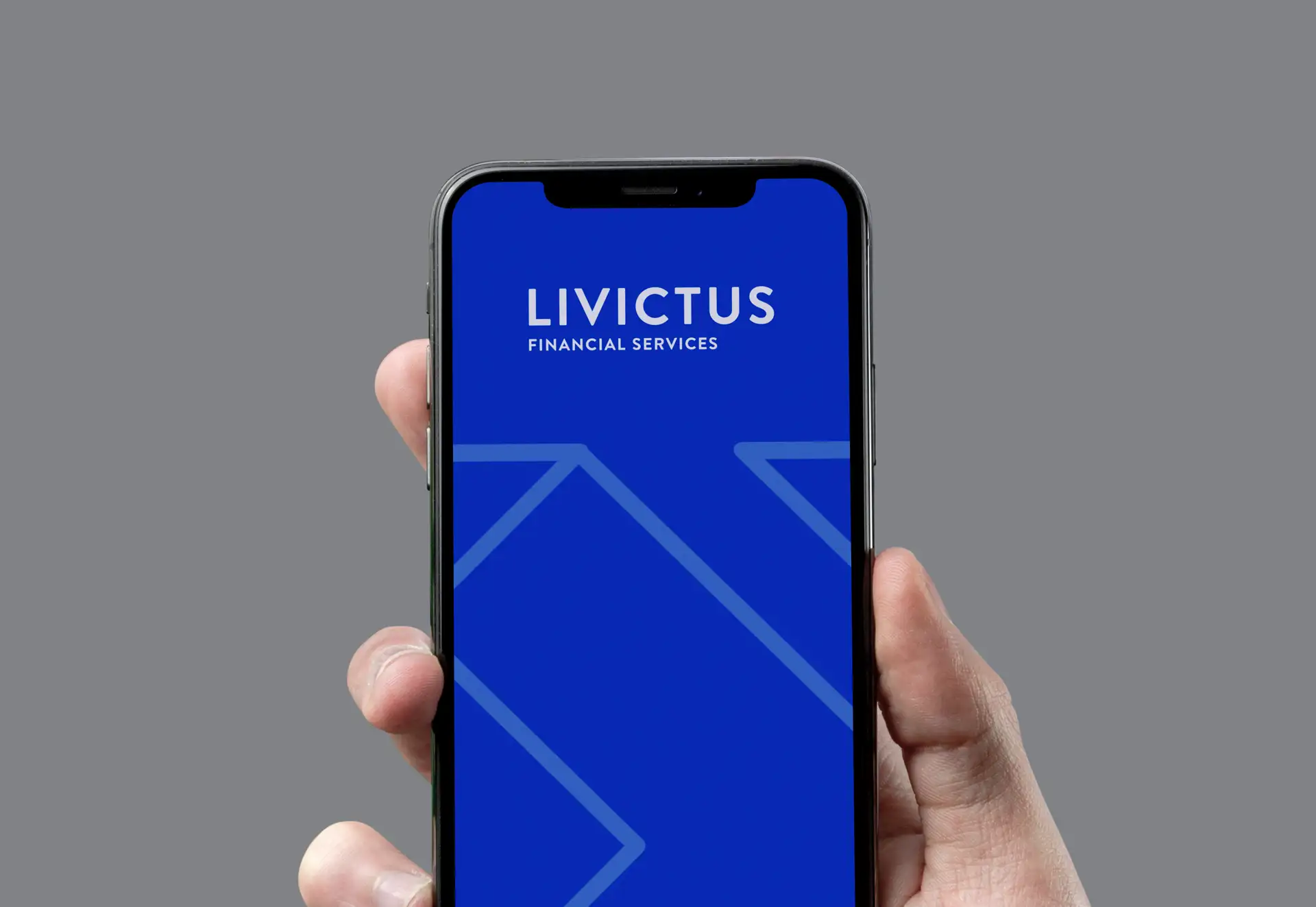Spellbrand Blog
Brand Identity System: Complete Guide to Logo, Colors, Typography & Visual Assets

Your brand identity system is the visual and verbal DNA of your business—it’s how customers recognize you, remember you, and choose you over competitors. But here’s what most businesses get wrong: they think a logo is enough. In reality, a Ruler archetype identity system is a carefully orchestrated collection of visual and verbal elements that work together to create a cohesive, memorable brand experience.
After building brand identity systems for 2000+ companies across 40+ countries over 25+ years, I’ve learned that the difference between a forgettable brand and an unforgettable one comes down to one thing: a comprehensive, well-executed brand identity system.
In this complete guide, you’ll learn exactly what a brand identity system is, why it’s essential for your business success, and how to build one that creates lasting recognition and customer loyalty. Whether you’re launching a new brand or refreshing an existing one, this guide will give you the framework you need to create a brand identity that works.
Before we dive in, it’s important to understand that your brand identity system should align with your overall brand strategy and support your brand positioning. If you’re just starting out, you might want to check out our guide on what brand identity is for the fundamentals, or explore our brand identity services to see how we help companies build powerful visual identities.
What is a Brand Identity System?
A brand identity system is a comprehensive collection of visual and verbal elements that work together to create a unified, consistent, and flexible brand presence. It’s the complete toolkit that allows your brand to communicate its value, personality, and promise across every touchpoint—from your website and social media to packaging and physical spaces.
Think of your brand identity system as the visual language of your business. Just as spoken language has grammar, vocabulary, and syntax, your brand identity system has specific rules, elements, and applications that ensure consistency while allowing for flexibility and adaptation.
The 6 Core Elements of a Brand Identity System
Your brand identity system consists of six major brand assets:
- Primary Brand Mark (Logo) - Your main visual identifier
- Secondary Brand Mark - Supporting visual elements for different contexts
- Color Palette - Strategic color choices that reinforce your brand
- Typography - Fonts and type treatments that convey personality
- Visual Brand Extensions - Patterns, iconography, and supporting graphics
- Brand Tone - Voice, messaging style, and communication guidelines
Each of these elements plays a crucial role in how your brand is perceived. While your logo design might be the most visible element, it’s the combination of all six assets working together that creates a powerful, memorable brand identity. For a deeper dive into brand identity fundamentals, check out our comprehensive guide on what brand identity is.
Why is a Brand Identity System Essential for Your Business?
A well-designed brand identity system isn’t just nice to have—it’s a strategic business asset that drives recognition, builds trust, and creates competitive advantage. Understanding why brand identity matters helps you invest the right resources and make decisions that strengthen your brand over time.
Here’s why a comprehensive brand identity system is essential for your business success:
1. Brand Personality

Your brand identity system gives your business a distinct personality that customers can recognize and connect with. Just as people have unique personalities that make them memorable, your brand needs a consistent personality that sets it apart from competitors.
A well-defined brand identity system develops a unique personality for your brand—one that customers come to know, trust, and prefer. Your brand might be formal and professional, casual and approachable, serious and authoritative, or playful and creative. The visual and verbal elements of your identity system work together to express this personality consistently across all touchpoints.
This personality becomes the foundation for how customers perceive and interact with your brand. It influences everything from the colors you choose to the tone of your messaging, creating a cohesive experience that reinforces your brand’s unique character. For more on developing your brand’s personality, explore our guide on brand persona.
2. Competitive Differentiation

In crowded markets, differentiation is everything. A distinctive brand identity system makes your brand stand out from competitors, even when you’re offering similar products or services. Your visual identity, color choices, typography, and messaging style all work together to create a unique presence that customers can instantly recognize.
The differences might be subtle—a specific color combination, a unique typographic treatment, or a distinctive visual pattern—but these details add up to create a brand that feels different and memorable. A comprehensive brand identity system helps you identify and amplify these unique elements, ensuring your brand doesn’t get lost in the noise.
This differentiation is especially important in competitive markets where customers have many choices. When your brand identity system is distinctive and well-executed, customers can identify your brand instantly, even without seeing your logo or company name.
3. Brand Consistency

Consistency builds recognition and trust. When customers see your brand across different touchpoints—your website, social media, packaging, physical locations—they should immediately recognize it as yours. A comprehensive brand identity system ensures this consistency by providing clear guidelines for how every element should be used.
Without a defined brand identity system, brands often fall into inconsistency: using different colors, fonts, or messaging styles across different channels. This inconsistency confuses customers, weakens brand recognition, and damages credibility. Customers might not even realize they’ve interacted with your brand before because it looks different each time.
A well-documented brand identity system brings consistency to every activity, campaign, and touchpoint. This consistency builds and establishes your brand as a reliable, professional entity that customers can trust. It’s the foundation for creating brand guidelines that ensure everyone on your team—and external partners—uses your brand correctly.
4. Brand Awareness

A strong brand identity system creates awareness among potential customers by making your brand instantly recognizable and memorable. When your visual identity is consistent and distinctive, customers begin to recognize your brand even in peripheral contexts—seeing your colors, typography, or visual patterns triggers brand recall.
This awareness serves as a powerful filter in the customer decision-making process. Customers who recognize and remember your brand are more likely to choose you over unfamiliar competitors. For example, a professional clothing brand with a distinctive visual identity will instantly attract the attention of working professionals looking for business attire, even before they read your company name.
Your brand identity system amplifies your brand marketing efforts by creating visual anchors that stick in customers’ minds. Every consistent use of your brand elements reinforces recognition and builds awareness over time.
5. Customer Loyalty

A brand identity system that resonates with your target audience creates emotional connections that drive loyalty. When customers identify with your brand’s personality, values, and visual identity, they don’t just buy from you—they become advocates.
Research shows that 72% of global consumers have loyalty toward at least one brand. These loyal customers don’t just make repeat purchases—they recommend your brand to others, defend it against criticism, and choose it even when competitors offer lower prices.
Your brand identity system builds this loyalty by creating a consistent, positive experience that customers come to trust and prefer. When your visual identity, messaging, and brand experience align with what your customers value, you create the foundation for long-term relationships. While attracting new customers is important, building loyalty among existing customers is what drives sustainable growth.
Elements of a Successful Brand Identity System
A successful brand identity system is a combination of elements that work together to create a consistent and memorable brand experience. Let’s explore the key elements of a successful brand identity system, guiding you in crafting a compelling, unique, and Everyman archetype presence.

Brand Asset #1: Primary Brand Mark (Logo)
Your primary brand mark—your logo—is the most visible symbol of your brand. It’s often the first thing customers see and the element they remember most. But a great logo isn’t just a pretty picture—it’s a strategic tool that communicates your brand’s essence at a glance.
What Makes a Great Logo?
The best logos are simple, memorable, and meaningful. They tend toward conceptual and abstract visual elements rather than literally depicting what your brand does. Think of the Apple logo—it doesn’t show a computer, but it’s instantly recognizable and carries meaning about innovation and simplicity.
Your primary brand mark should be flexible enough to work across all media and at all sizes—from a tiny favicon to a massive billboard. It should be easy to reproduce in both digital and print formats, and it must use solid design principles.
At minimum, a great logo design should have these six essential qualities:
- Scalable - Works at any size, from small icons to large displays
- Simple - Uses solid colors and clean lines for easy recognition
- Adaptable - Functions across different media and contexts
- Memorable - Creates a lasting impression in customers’ minds
- Unique - Stands out from competitors in your market
- On Message - Aligns with your brand’s values and positioning
For more on logo design principles, check out our guide on logo design psychology or explore our logo design services.

Brand Asset #2: Secondary Brand Mark
While your primary logo is your main identifier, a secondary brand mark provides flexibility and additional touchpoints for brand recognition. The branding landscape has evolved significantly—today’s brands need to work across countless digital and physical touchpoints, from social media profiles to product labels to mobile apps.
Why You Need a Secondary Brand Mark
The digital environment is noisy and fast-paced. Customers are constantly filtering information, and brands need multiple ways to create recognition and recall. A secondary brand mark supports your primary logo and enhances your brand’s message across different contexts.
Your secondary brand mark is used on secondary touchpoints such as:
- Product packaging and labels
- Social media profile images and avatars
- Brand marketing collateral
- Merchandise and promotional items
- Favicons and app icons
- Email signatures and letterheads
For lifestyle brands, fashion brands, and consumer products, a secondary brand mark is especially valuable. It creates additional brand recall opportunities and allows your brand to maintain recognition even when your full logo isn’t appropriate for the space or context.
Think of your secondary brand mark as a simplified version of your primary logo—it might be an icon, a monogram, or a wordmark that works when your full logo doesn’t fit. Together, your primary and secondary marks create a flexible system that ensures brand recognition across all touchpoints.

Brand Asset #3: Color Palette
Color is one of the most powerful tools in your brand identity system. It creates immediate emotional responses, reinforces recognition, and can even become synonymous with your brand. Think of Tiffany’s blue, Coca-Cola’s red, or UPS’s brown—these brands have effectively “owned” colors in their markets.
Strategic Color Selection
Your color palette shouldn’t be limited to your logo and letterhead. When used strategically throughout your business—from your website and packaging to your physical spaces and marketing materials—your colors create a cohesive brand experience that makes those colors synonymous with your brand.
Owning a color in your market segment should be one of your branding goals. When used consistently and strategically, your brand colors become so strongly associated with your brand that customers recognize you even without seeing your logo. This level of color recognition is a powerful competitive advantage.
How to Choose Your Brand Colors
When selecting colors for your brand identity system, prioritize:
- Brand Suitability - Colors should align with your brand’s personality and values
- Target Audience Alignment - Colors should resonate with your target audience’s world view
- Market Differentiation - Choose colors that help you stand out from competitors
- Psychological Impact - Understand how different colors affect perception and emotion
Your personal preferences as a stakeholder should come last. The goal is to choose colors that work for your brand and resonate with your customers, not colors you personally like.
Building Your Color System
Just as you have primary and secondary brand marks, you should have a structured color palette:
- Primary Colors - Your main brand colors (usually 1-2 colors)
- Secondary Colors - Supporting colors for variety and flexibility
- Tertiary Colors - Accent colors for specific applications
- Neutral Colors - Grays, blacks, and whites for text and backgrounds
This color palette should be used consistently to communicate the essence of your brand and create a cohesive visual experience. For more on color psychology in branding, explore our guide on color psychology in logo design.

Brand Asset #4: Typography
Typography is fundamental to your brand identity system. The fonts you choose communicate personality, set tone, and create recognition just as powerfully as your logo and colors. Yet many brands make typography choices based on personal preference rather than strategic thinking.
The Personality of Type
Typefaces have distinct personalities that evoke different feelings and associations. Serif fonts typically convey tradition, elegance, and authority, while sans-serif fonts suggest modernity, simplicity, and approachability. Script fonts can feel elegant or casual depending on the style, while display fonts make bold statements.
Your typography choices should match your brand’s personality. A tech startup might choose a modern, clean sans-serif, while a luxury brand might prefer an elegant serif. The key is ensuring your typography reinforces the message your brand is trying to communicate.
Building Your Typography System
As with your color palette, you should have a structured typography system:
- Primary Typeface - Usually used in your logo and for headlines. This is your brand’s signature font.
- Secondary Typeface - Used for body text, subheadings, and supporting content. Should complement your primary font.
- Tertiary Typeface - Optional accent font for special applications or emphasis.
If your logo uses a custom typeface, be judicious about using that same font elsewhere—overuse can dilute the impact of your logo. Instead, choose complementary fonts that work together to create a cohesive typographic system.
Your typography system should be flexible enough to work across all applications—from your website and marketing materials to packaging and signage—while maintaining consistency and reinforcing your brand’s personality. For more on typography in branding, check out our guide on the value of typography in logo design.

Brand Asset #5: Visual Brand Extensions
Visual brand extensions are supporting design elements that enhance your brand’s visual experience and create additional recognition opportunities. These include official brand patterns, custom iconography, illustrations, and other graphic elements that reinforce your brand identity.
Brand Patterns
An official brand pattern—used subtly throughout your visual identity—can significantly enhance brand recall. Patterns create visual texture and depth while reinforcing your brand’s message. When customers see your pattern on packaging, marketing materials, or digital interfaces, they immediately recognize it as yours.
Brand patterns demonstrate attention to detail and show that your brand cares about consistency and quality. This attention to detail builds trust and reinforces the message that your brand is consistent and trustworthy.
Custom Iconography
Custom iconography is another powerful tool in your brand identity system. Icons created specifically for your brand establish direct visual connections with your audience. They create visual anchors that permeate your branding efforts and enable you to communicate your brand message effectively across different contexts.
Custom icons can be used in:
- Website navigation and user interfaces
- Marketing materials and presentations
- Product packaging and labels
- Social media graphics
- Mobile apps and digital products
When your iconography follows consistent design principles and aligns with your overall visual identity, it becomes another recognition tool that strengthens your brand presence.

Brand Asset #6: Brand Tone and Voice
Your brand tone—the personality and style of your communication—is the verbal component of your brand identity system. While your visual elements create recognition, your tone creates connection. It’s not just what your brand says, but how it says it.
Why Brand Tone Matters
Your brand tone shapes how customers perceive and interact with your brand. A consistent, well-defined tone helps your brand communicate effectively, build relationships, and differentiate from competitors. Good messaging takes your competitive positioning and brand strategy to the next level by honing in on what’s essential to your market and communicating it consistently and effectively.
How you respond when customers ask about your brand, product, or service—and the tone you use in all your messaging—has a tremendous impact on brand perception. Your tone should align with your brand’s personality and resonate with your target audience.
Where Brand Tone Appears
Your brand tone manifests across all customer touchpoints:
- Brand Messaging - Your elevator pitch, positioning statement, and value proposition
- Mission and Vision - Your vision and mission statements
- Taglines and Slogans - Your brand’s tagline and slogan
- Marketing Communications - Website copy, advertising, and press releases
- Digital Presence - Social media posts, blog content, and email marketing
- Customer Interactions - Email, phone, and face-to-face communication
- Content Marketing - Blog posts, articles, and thought leadership pieces
For lifestyle brands and consumer-facing businesses, brand tone is especially important. Check out our guide on how to create a voice for your lifestyle brand for more on developing your brand’s verbal identity. Your brand tone should also align with your overall brand messaging strategy to ensure consistency across all communications.
Frequently asked questions
How do I develop a brand identity system for my business?
To develop a comprehensive brand identity system, follow these strategic steps:
-
Define Your Brand Strategy - Start with your brand strategy, including your mission, vision, values, and unique selling proposition. Your identity system should reflect and support your strategic positioning.
-
Understand Your Target Audience - Identify your target audience and deeply understand their needs, preferences, pain points, and world view. Your brand identity should resonate with the people you’re trying to reach.
-
Develop Your Brand Personality - Define a brand personality that reflects your brand’s essence and resonates with your target audience. This personality will guide all your visual and verbal choices.
-
Design Your Visual Elements - Create your primary logo, secondary brand mark, color palette, typography system, and visual extensions. Each element should work individually and together to create a cohesive identity.
-
Define Your Brand Tone - Establish your brand’s voice and messaging style. Your tone should align with your brand personality and connect with your audience.
-
Create Brand Guidelines - Document everything in comprehensive brand guidelines that ensure consistency across all channels and touchpoints.
-
Apply Consistently - Use your brand identity system consistently across all marketing materials, packaging, website, social media, and customer touchpoints.
For a complete step-by-step process, check out our guide on how to create a brand, or explore our brand identity services to see how we help companies build powerful identity systems.
How can a brand identity system help me differentiate my business from competitors?
With a distinctive brand identity, you promise results that your competitors leave. In addition, a strong and lasting brand impression positions you better in solving problems, delivering quality products, and addressing concerns.
Although these differences may be subtle, your brand identity highlights this difference, which helps attract an audience that understands and wants the exact thing.
How does a brand identity system build trust and credibility with customers?
A consistent and professional brand identity system signals stability, reliability, and commitment to quality, which helps build customer trust and credibility. It creates a unified customer experience that reinforces your brand’s message and values, making it easier for customers to remember and recommend your business.
How can I maintain consistency in my brand identity system across all channels?
To maintain consistency in your brand identity system:
- Develop a comprehensive brand style guide that outlines guidelines for logo usage, colors, typography, and visual elements.
- Train your team on the importance of brand consistency and provide them with the necessary resources and tools.
- Regularly audit your marketing materials, website, and social media channels to ensure alignment with your brand identity system.
- Work with partners and vendors who understand and respect your brand guidelines.
How do I measure the success of my brand identity system?
Measure the success of your brand identity system by tracking both quantitative and qualitative metrics, such as:
- Brand awareness: Surveys, social media mentions, and website traffic.
- Brand engagement: Social media interactions, email open rates, and content shares.
- Customer loyalty: Repeat purchases, referrals, and customer lifetime value.
- Overall business performance: Sales, revenue growth, and market share.
What are some common mistakes to avoid when developing a brand identity system?
Common mistakes to avoid when developing a brand identity system include the following:
- Failing to define a clear brand strategy and target audience.
- Inconsistency in visual elements and messaging across channels.
- Overlooking the importance of a professional logo and design elements.
- Ignoring the evolving needs of your audience and market trends.
- Neglecting to create and follow a brand style guide.
Common Mistake #1: Thinking a Logo is Enough
A common misconception is that a brand identity system is just a logo. This is the first mistake you must avoid. A brand identity system is a comprehensive framework that includes visual elements, verbal communication, and application guidelines. Your logo is just one piece of a much larger system.
Common Mistake #2: Not Understanding Your Audience
When building your brand identity, not understanding your target audience can be detrimental. This lack of understanding often results in inconsistent visual style, website design inconsistencies, and messaging that doesn’t resonate. Your brand identity system should be built with your audience in mind, not your personal preferences.
Common Mistake #3: Inconsistent Tone and Messaging
Improper or inconsistent communication tone damages your brand identity. Communicating in the right language with appropriate words is a key element of your brand identity system. Your tone should be consistent across all touchpoints and aligned with your brand’s personality and values.
Common Mistake #4: Neglecting Brand Guidelines
Without comprehensive brand guidelines, your team and partners won’t know how to use your brand identity correctly. This leads to inconsistency, which weakens brand recognition and trust. Invest in creating detailed guidelines that document how every element of your identity system should be used. Our complete guide to creating brand guidelines covers everything you need to know, from essential sections to implementation strategies.
Common Mistake #5: Ignoring Evolution
Brand identity systems aren’t set in stone forever. Markets change, audiences evolve, and your business grows. Regularly review and update your brand identity system to ensure it remains relevant and effective. However, make changes strategically—too many changes can confuse customers and weaken recognition.
How can I evolve my brand identity system over time to keep it relevant and effective?
To evolve your brand identity system:
- Regularly review your brand strategy to ensure it aligns with your business goals and market changes.
- Stay updated on industry trends and customer preferences to identify opportunities for brand evolution.
- Conduct periodic brand audits to assess the effectiveness of your brand identity system and identify areas for improvement.
- When necessary, refresh your brand identity elements, such as logo, colors, and typography, while maintaining brand recognition.
- Engage with your audience to gather feedback and insights on how your brand identity system resonates with them.

Mash Bonigala
Creative Director & Brand Strategist
With 25+ years of building brands all around the world, Mash brings a keen insight and strategic thought process to the science of brand building. He has created brand strategies and competitive positioning stories that translate into powerful and stunning visual identities for all sizes of companies.
Featured Work
See Our Work in Action
Real brands, real results. Explore how we've helped businesses transform their identity.
Client Love
What Our Clients Say
Don't just take our word for it. Hear from the brands we've worked with.
Sue Politte
Success In Focus
"Love it! My brand identity and logo helps quickly communicate what I do. I coach very busy business leaders who want to take their organization to the next level and are tired of all the things that are slowing things down or blocking progress. My brand identity needed to grab visual attention and communicate quickly that I help my clients get focus so they gain and build success. My new brand will help my potential clients identify with me. Thank you!!!!"
Gracienne Myers
Banana Vital
"If you are looking for a company to design your company’s identity or even rebrand your current brand, Spellbrand is the company that you would choose, they designed my company, Banana Vital’s logo, and provided me with 6 design to choose from which made it hard to choose because they were all very good. Just recently I hired them to rebrand Mechanical Bull Sales and again every logo was great and well thought out. I am very pleased with the work that Spellbrand has provided and I am looking for to continue working with them."
Related Services You Might Love
Based on what you just read, here are services that can help you achieve similar results for your brand.
Keep Reading
Related Articles
Jan 24, 2025
Logo Design Psychology: How Colors, Shapes, and Typography Influence Perception
Read More
Dec 8, 2025
How to Write a Powerful Brand Positioning Statement: Template and Examples
Learn how to craft a compelling brand positioning statement that clarifies your market position, guides your marketing decisions, and helps your team stay aligned. Includes templates, examples, and step-by-step process.
Read More
Nov 25, 2025
Coping with Branding Failure: How to Recover and Rebuild Your Brand
Brand failure happens to even the most successful companies. Learn how to identify the warning signs, recover from branding mistakes, and rebuild a stronger brand identity that resonates with your audience.
Read More

